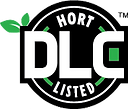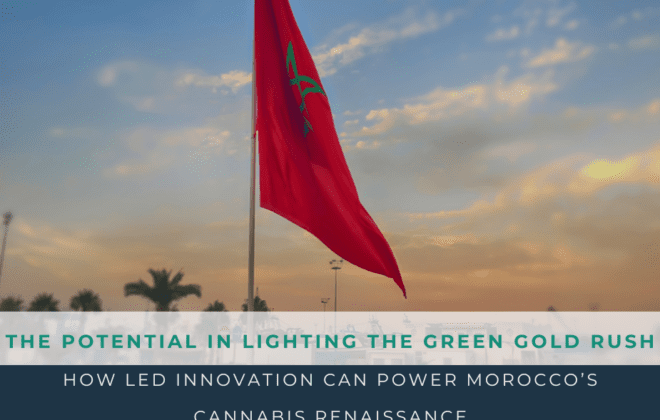Certifications 101: A Roadmap to LEDs for Horticultural Environments

When it comes to the world of LED lighting-no two manufacturers are exactly alike. This can make navigating through the volume of information particularly challenging. Certifications provide growers with an objective way to “check off the boxes”.
Which Certification Should You Be Looking For?
First off, it’s important to know that not all certifications are mandated (or even necessary). This means that the lighting manufacturer will often choose which certification to apply for, a decision which is usually based on their target application and product specifications. For example, a reputable manufacturer may choose to invest in a higher grade certification instead of a more standardized one because it incorporates all of the requirements of the standard certification, while also verifying additional factors that are critical for the industry.
This Means That:
A. Most reputable manufacturers will choose a handful of certifications.
B. Exercise caution when reviewing if your chosen light is certified. Some manufacturers may either falsify the certifications, make broad claims (certifying one product but not the others), or over-market lower end certifications (making their lights sound better than they actually are).
Thankfully, a quick search on the Certification website will help weed out those lights who make false certification claims. Before crossing the light off your list, remember not all manufacturers are certified under their public name. For example: Our certifications are listed under our registered name not our public name: Aelius LED. Most certifications require regular renewal, so ask to see a copy of the most recent paperwork if you can’t find what you are looking for online.
This is why most of the top LED manufacturers have chosen only a handful of certifications. These manufacturers know the needs of their customer base and so they choose the certifications that will check off those boxes. But, how do you know which certifications are right for your business?
In our last post, we begin dissecting the labels with our discussion about ingress rating and what the numbers behind the IP mean. However, Ingress rating is just one component to consider when choosing your lighting.
The Basics:
Demand for LED lights in the indoor growing space has skyrocketed due to their consistent performance, low heat output, and energy efficiency. High humidity, high temperatures, pressurized sprays, watering, and air-born contaminants all place LED lights under an extreme amount of pressure.
When selecting your lights you need to not only make sure that they are safe but that they consistently perform.
Certifications help growers get past the marketing hype by quickly highlighting who are the reputable LED manufacturers in their space. At the same time, they provide the purchaser with a road map to help decipher which lights have been authorized for their specific environment or country and identify the reputable LED manufacturers in their space.
The Following is a Brief Guide on Some of the More Common Certifications for Horticulture Lighting:
CE Certification

CE certification confirms that the product follows basic safety guidelines of the European Union. To obtain this approval, manufacturers need to be able to confirm that their product meets low voltage directive, restriction of hazardous substance directive, and the electromagnetic compatibility directive. Companies that want to be able to be sell in the European market will be investing in this certification.
CSA

Developed by the Canadian Standards Association, this certification was created to verify that the lights for horticultural environments can withstand the additional demand that it requires. The certification reviews both the performance and photobiological safety against a set of standards. The company uses their SpectralSuite 3 LED metrology software to evaluate several performance components including full testing for PAR output and reviewing the Yield Photon Flux (YPF).
CETLUS

Basically, this is the North American version of CE certification. Companies who choose cETLus certification, may opt out of others like CSA, because of cETLus’s stricter requirements. Basically, if you have ceTLus, you can rest assured that the light also meets the requirements of CSA.
This certification verifies that the lights are authorized to be sold and are safe to use in North America. Manufacturers can choose from one of three options: to get cETLus certification (Canada and USA), ETL (certified and tested for the United States), or cETL ( tested and certified for Canada).
RoHS (Restriction of Hazardous Substances Directive)

RoHS certification is a requirement for manufacturers that wish to sell their products in the State of California. This designation verifies that all efforts have been made to reduce hazardous materials in electronics. The creation of this certification was motivated in part to address the global issue of consumer electronics toxic waste.
IP65
When seeking lights for your grow operation, look for the IP rating. An IP65 rating ensures that the lighting products are both dust-tight and fully protected against the streams of water.
DLC Certification

An optional lighting certification, DLC helps define the LED lights that will consistently perform well in the horticulture environment. These three letters provide growers with peace of mind, knowing that the lighting solution that they’ve invested in has passed rigorous, objective testing.
Launched by the DesignLights Consortium, their goal is to standardize LED lighting while elevating the industry. The three principle areas that this certification looks at are distribution, colour and longevity/stress.
For horticultural lighting, DLC requires that LED lights are at least 10 percent more energy efficient than a 1000 watt high pressure sodium light. This includes testing and reporting the following items: photosynthetic photon flux, photon flux, Far-Red, photon efficacy, and spectral quantum distribution.
To receive DLC certification, the LED lights must meet these requirements:
Efficacy > 1.9 umol/J between 400-700nm
Long-term performance: Q90 > 36,000 hours photon flux maintenance
Driver Lifetime: > 50,000 hours
Warranty: > 5 years
Energy Efficient
The DLC are also committed to review and/or revise their specifications every two years so their requirements match the advancements in technology.
Don’t fall prey to false promises and cheap alternatives! Instead, choose to partner with a lighting manufacturer that values (and invests in) the certification process. These reliable, impartial standards will help verify that your chosen lighting solution is well suited for your indoor growing operation.




